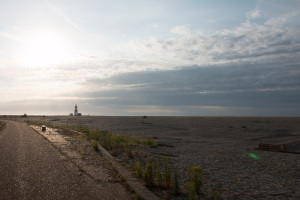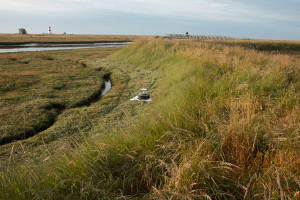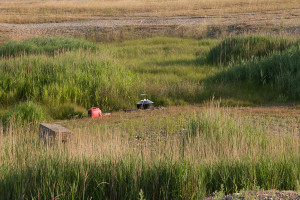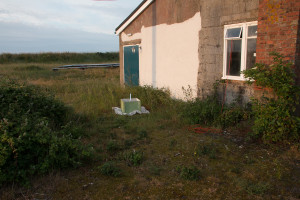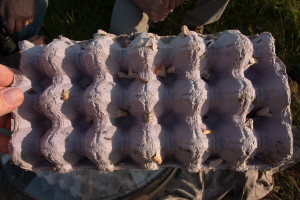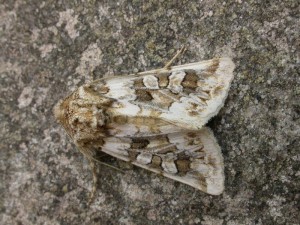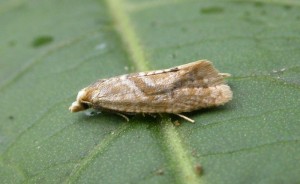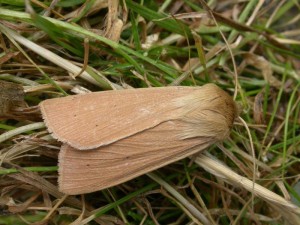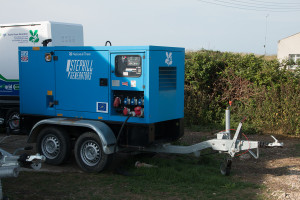After missing out on a visit last year, we returned to Ordfordness this year at a slightly earlier time than previously, just to see what was around. For once the weather gods played ball for us with a warm dry evening and a slight breeze. We deployed 2 pairs of traps out on the site, with one pair covering a shingle and rushy grassland patch and the other covering saltmarsh and scrubby grassland habitats. 2 More traps were run from the electrics at a couple of buildings to the south of the accommodation area, a 125w mv plus an actinic. There was also the reserve’s static trap on as well as their small actinic placed next to a Pine tree by the landing quay.
After a good night’s sleep, we were up and about early to check the traps. It was very warm already, even at 5.30am so we were confident of a good catch, and we weren’t to be disappointed. All traps had plenty of moths in. We also had the luxury of using the reserve’s electric buggy to ride between the lights, much quicker than walking!
Highlights included the following, some moths listed may appear as common species to us mainland trappers but are very good records for Orfordness being a coastal site with few trees.
Tawny shears (abundant, at least 300 caught in one of the shingle traps – see photo of egg tray below), Dotted fan-foot (a good number), Starwort, Goniodoma limoniella, Dusky brocade (a good number), Matthew’s wainscot, Anania perlucidalis, Phalonidia affinitana, Striped wainscot, Agdistis bennetii, Water ermine (1), Agapeta zoegana (a rare moth on Orfordness), Brachima inornatella, Pima boisduvaliella (a few on the shingle), Monochroa palustrella (good numbers), Platytes alpinella, Anerastia lotella, Marbled clover (first site record since 2008), Ground lackey (3, just getting started), Aristoleia brizella, Aphomia zelleri, Garden tiger, Cream-spot tiger, Clouded silver (the 3rd site record), Green silver lines (only the second site record) and Beautiful hook-tip (a new site record).
There were also many small tricky micros present, some of which have been retained for future determination. With the recent spell of immigration of moths from Europe, it was no surprise that we caught a few migrants, most notable of which were a few Small mottled willow, the first for the reserve since 2006.
With dark clouds looming as we cleared away the last of the equipment, we hastily loaded up the boat to return to the mainland. Good job we did as the rain started as we were finishing loading the cars.All in all a very enjoyable meeting and thanks must go to Dave Fincham, Mike Marsh and Gillian Hammond for their company and all their help with the meeting. We will be back next year hopefully!
Neil
Thanks to Tony for providing some of the photos below.

